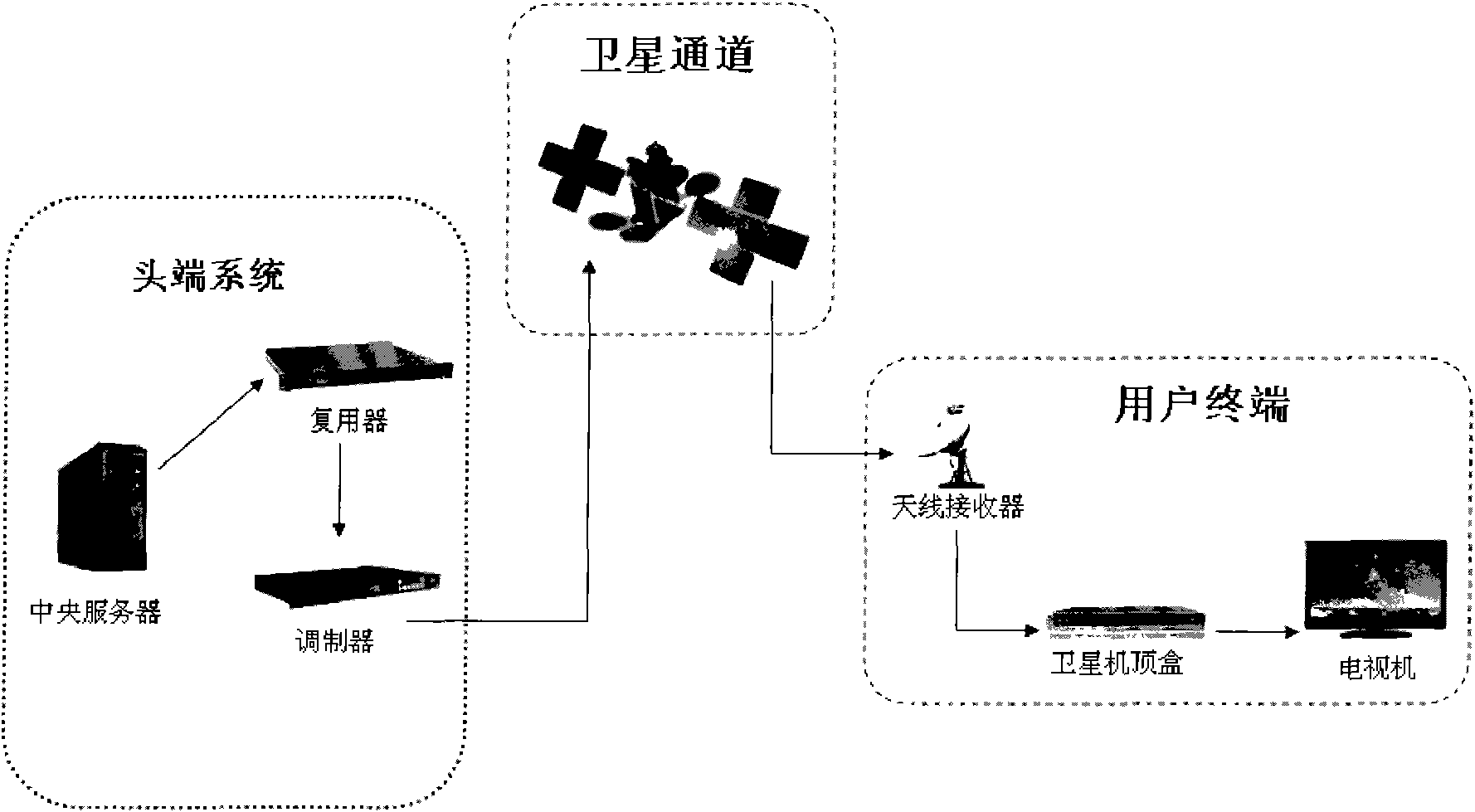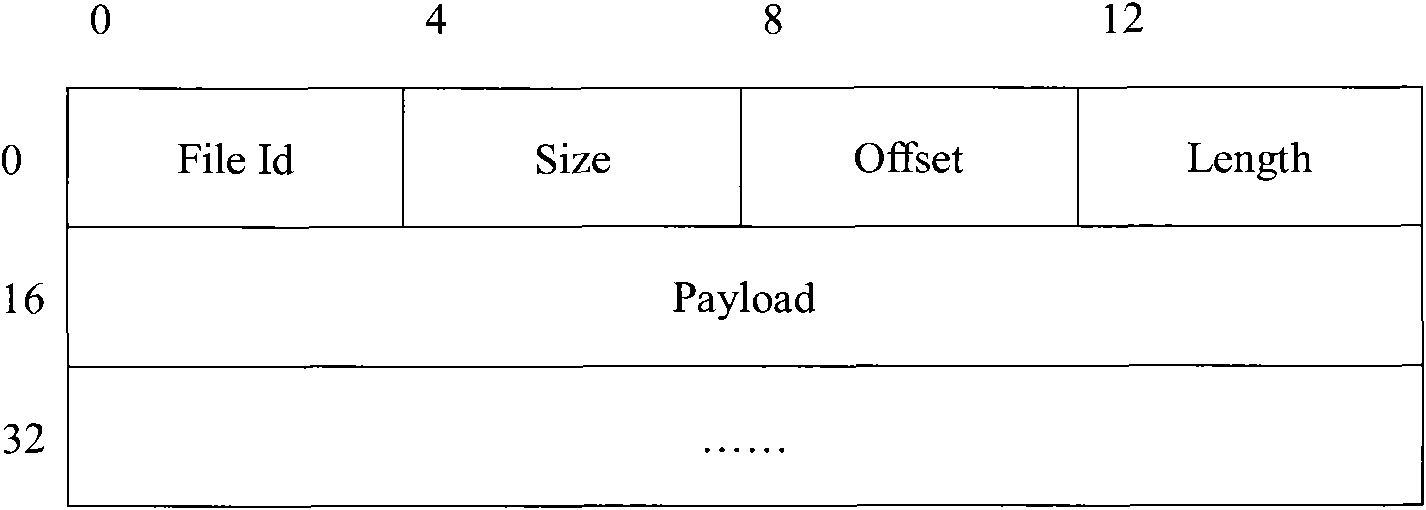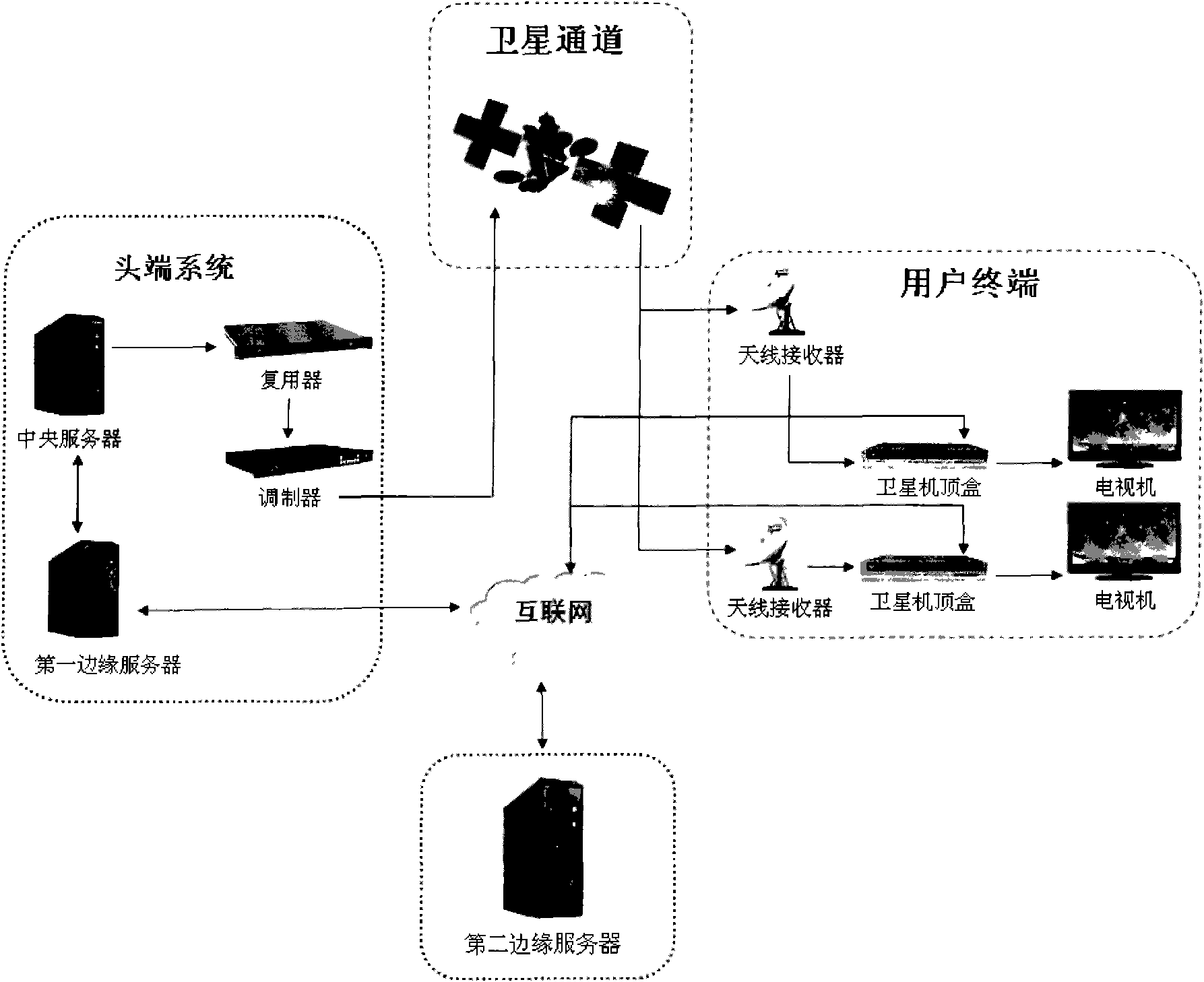Push VOD (Video-On-Demand) system of digital television and push VOD method thereof
A digital TV and on-demand system technology, applied in the direction of electrical components, image communication, selective content distribution, etc., can solve the problems of occupying large bandwidth resources and low efficiency, achieve small broadcast bandwidth, improve network resource utilization, and improve user The effect of quality of experience
- Summary
- Abstract
- Description
- Claims
- Application Information
AI Technical Summary
Problems solved by technology
Method used
Image
Examples
Embodiment 1
[0063] According to Embodiment 1 of the present invention, a PUSH-VOD system is provided. image 3 The physical structure of the PUSH-VOD system of this embodiment is shown, and the PUSH-VOD system includes a head-end system, a terminal system and supplementary auxiliary equipment (ie image 3 second edge server in ). The head-end system includes a central server, a multiplexer, a modulator and a first edge server. End systems include antenna receivers, set-top boxes, and display devices (such as televisions). There is a broadcast link (in this embodiment a satellite link) between the central server and the set top box. Both the first and second edge servers and the set-top box are connected to the Internet.
[0064] Wherein, a push server (the push server may be a software module) is deployed on the central server, and Windows 2003 server operating system is installed on the central server. A seed server is deployed on the first edge server (the seed server can be a softw...
Embodiment 2
[0080] According to Embodiment 2 of the present invention, there is provided a push-on-demand method based on the push system of Embodiment 1, the method comprising the following steps:
[0081] 1) At the beginning of the push, the seed server obtains a complete copy of the content file, and calculates the corresponding seed file and sends it back to the push server. The push server also compiles the seed file into the push plan.
[0082] 2) The head end uses the broadcast channel to periodically broadcast push information files to the terminals. The format of the push information files has been introduced in Embodiment 1, and will not be repeated here. In the push information file, each content file corresponds to The initial value of the P2P field of the node is 0.
[0083] 3) The head end uses the broadcast channel to broadcast the content file and the seed file corresponding to the content file to the terminal in the push cycle. To ensure reliability, in this em...
Embodiment 3
[0093] In Embodiment 1, all lost data blocks are supplemented by P2P mode, which can effectively reduce the occupation of the broadcast channel by the system. However, this supplementary mode occupies a relatively large Internet network. Therefore, the present invention also provides another supplementary packet solution to further improve the PUSH-VOD system in Embodiment 1.
[0094] In practice, it is found that in the PUSH-VOD system, the acceptance rates of all terminals in a geographically adjacent area are basically the same, and the sequence numbers of packet loss are also very similar. Broadcasting is still the most efficient way to deal with similar packet loss, so this similarity can be used to re-push the most densely lost data blocks by using a small additional broadcast link bandwidth to achieve more Efficient secondary push, thereby greatly reducing the occupation of Internet bandwidth.
[0095] According to Embodiment 3 of the present invention, a PUSH-VO...
PUM
 Login to View More
Login to View More Abstract
Description
Claims
Application Information
 Login to View More
Login to View More - R&D
- Intellectual Property
- Life Sciences
- Materials
- Tech Scout
- Unparalleled Data Quality
- Higher Quality Content
- 60% Fewer Hallucinations
Browse by: Latest US Patents, China's latest patents, Technical Efficacy Thesaurus, Application Domain, Technology Topic, Popular Technical Reports.
© 2025 PatSnap. All rights reserved.Legal|Privacy policy|Modern Slavery Act Transparency Statement|Sitemap|About US| Contact US: help@patsnap.com



